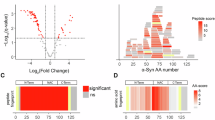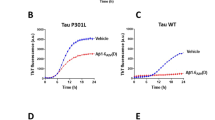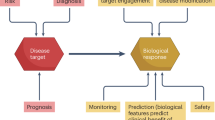Abstract
Minocycline is a semi-synthetic tetracycline antibiotic that effectively crosses the blood–brain barrier. Minocycline has been reported to have significant neuroprotective effects in models of cerebral ischemia, traumatic brain injury, amyotrophic lateral sclerosis, and Huntington's and Parkinson's diseases. In this study, we demonstrate that minocycline has neuroprotective effects in in vitro and in vivo Alzheimer's disease models. Minocycline was found to attenuate the increases in the phosphorylation of double-stranded RNA-dependent serine/threonine protein kinase, eukaryotic translation initiation factor-2 α and caspase 12 activation induced by amyloid β peptide1–42 treatment in NGF-differentiated PC 12 cells. In addition, increases in the phosphorylation of eukaryotic translation initiation factor-2 α were attenuated by administration of minocycline in Tg2576 mice, which harbor mutated human APP695 gene including the Swedish double mutation and amyloid β peptide1–42-infused rats. We found that minocycline administration attenuated deficits in learning and memory in amyloid β peptide1–42-infused rats. Increased phosphorylated state of eukaryotic translation initiation factor-2 α is observed in Alzheimer's disease patients' brains and may result in impairment of cognitive functions in Alzheimer's disease patients by decreasing the efficacy of de novo protein synthesis required for synaptic plasticity. On the basis of these results, minocycline may prove to be a good candidate as an effective therapeutic agent for Alzheimer's disease.
Similar content being viewed by others
Log in or create a free account to read this content
Gain free access to this article, as well as selected content from this journal and more on nature.com
or
References
Baumann O, Walz B (2001). Endoplasmic reticulum of animal cells and its organization into structural and functional domains. Int Rev Cytol 205: 149–214.
Blum D, Chtarto A, Tenenbaum L, Brotchi J, Levivier M (2004). Clinical potential of minocycline for neurodegenerative disorders. Neurobiol Disease 17: 359–366.
Bonelli RM, Heuberger C, Reisecker F (2003). Minocycline for Huntington's disease: an open label study. Neurology 60: 883–884.
Chang RC, Wong AK, Ng HK, Hugon J (2002a). Phosphorylation of eukaryotic initiation factor-2 alpha (eIF2alpha) is associated with neuronal degeneration in Alzheimer's disease. Neuroreport 13: 2429–2432.
Chang RC, Suen KC, Ma CH, Elyman W, Ng HK, Hugon J (2002b). Involvement of double-stranded RNA-dependent protein kinase and phosphorylation of eukaryotic initiation factor-2alpha in neuronal degeneration. J Neurochem 83: 1215–1225.
Chen A, Muzzio IA, Malleret G, Bartsch D, Verbitsky M, Pavlidis P et al (2003). Inducible enhancement of memory storage and synaptic plasticity in transgenic mice expressing an inhibitor of ATF4 (CREB-2) and C/EBP proteins. Neuron 39: 655–669.
Chen M, Ona VO, Li M, Ferrante RJ, Fink KB, Zhu S et al (2000). Minocycline inhibits caspase-1 and caspase-3 expression and delays mortality in a transgenic mouse model of Huntington disease. Nat Med 6: 797–801.
Cho KO, La HO, Cho YJ, Sung KW, Kim SW (2006). Minocycline attenuates white matter damage in a rat model of chronic cerebral hypoperfusion. J Neurosci Res 83: 285–291.
Cleary JP, Walsh DM, Hofmeister JJ, Shankar GM, Kuskowski MA, Selkoe DJ et al (2005). Natural oligomers of the amyloid-beta protein specifically disrupt cognitive function. Nat Neurosci 8: 79–84.
Costa-Mattioli M, Gobert D, Harding H, Herdy B, Azzi M, Bruno M et al (2005). Translational control of hippocampal synaptic plasticity and memory by the eIF2alpha kinase GCN2. Nature 436: 1166–1173.
DeGracia DJ, Montie HL (2004). Cerebral ischemia and the unfolded protein response. J Neurochem 91: 1–8.
Dommergues MA, Plaisant F, Vemey C, Gressens P (2003). Early microglial activation following neonatal excitotoxic brain damage in mice: a potential target for neuroprotection. Neuroscience 121: 619–628.
Dreher D, Jornot L, Junod AF (1995). Effects of hypoxantine–xantine oxidase on Ca2+ stores and protein synthesis in human endothelial cells. Circ Res 76: 388–395.
Du Y, Ma Z, Lin S, Dodel RC, Gao F, Bales KR et al (2001). Minocycline prevents nigrostriatal dopaminergic neurodegeneration in the MPTP model of Parkinson's disease. Proc Natl Acad Sci 98: 14669–14674.
Good ML, Hussey DL (2003). Minocycline stain devil? Br J Dermatol 149: 237–239.
Harding HP, Novoa I, Zhang Y, Zeng H, Wek R, Schapira M et al (2000). Regulated translation initiation controls stress-induced gene expression in mammalian cells. Mol Cell 6: 1099–1108.
Harding HP, Zhang Y, Ron D (1999). Protein translation and folding are coupled by an endoplasmic-reticulum-resident kinase. Nature 397: 271–274.
Hayashi T, Saito A, Okuno S, Ferrand-Drake M, Dodd RL, Chan PH (2005). Damage to the endoplasmic reticulum and activation of apoptotic machinery by oxidative stress in ischemic neurons. J Cereb Blood Flow Metab 25: 41–53.
He Y, Appel S, Le W (2001). Minocycline inhibits microglial activation and protects nigral cells after 6-hydroxydopamine injection into mouse striatum. Brain Res 909: 187–193.
Heo K, Cho YJ, Cho KJ, Kim HW, Kim HJ, Shin HY et al (2006). Minocycline inhibits caspase-dependent and -independent cell death pathways and is neuroprotective against hippocampal damage after treatment with kainic acid in mice. Neurosci Lett 398: 195–200.
Hsiao K, Chapman P, Nilsen S, Eckman C, Harigaya Y, Younkin S et al (1996). Correlative memory deficits, Abeta elevation, and amyloid plaques in transgenic mice. Science 274: 99–102.
Hunter C, Bachman C, Granholm AC (2004b). Minocycline prevents cholinergic loss in a mouse model of Down's syndrome. Ann Neurol 56: 675–688.
Hunter CL, Quintero EM, Gilstrap L, Bhat NR, Grandhelm AC (2004a). Minocycline protects basal forebrain cholinergic neurons from mu p75-saporin immunotoxic lesioning. Eur J Neurosci 19: 3305–3316.
Kandel ER (2001). The molecular biology of memory storage: a dialogue between genes and synapses. Science 294: 1030–1038.
Katayama T, Imaizumi K, Manabe T, Hitomi J, Kudo T, Tohyama M (2004). Induction of neuronal death by ER stress in Alzheimer's disease. J Chem Neuroanat 28: 67–78.
Kaufman RJ (1999). Stress signaling from the lumen of the endoplasmic reticulum: coordination of gene transcriptional and translational controls. Genes Dev 13: 1211–1233.
Lindholm D, Wootz H, Korhonen L (2006). ER stress and neurodegenerative diseases. Cell Death Differ 13: 385–392.
Matsuki S, Iuchi Y, Ikeda Y, Sasagawa I, Tomita Y, Fujii J (2003). Suppression of cytochrome c release and apoptosis in testes with heat stress by minocycline. Biochem Biophys Res Commun 312: 843–849.
Nakagawa T, Zhu H, Morishima N, Li E, Xu J, Yankner BA et al (2000). Caspase-12 mediates endoplasmic-reticulum-specific apoptosis and cytotoxicity by amyloid-beta. Nature 403: 98–103.
Nitta A, Fukuta T, Hasegawa T, Nabeshima T (1997). Continuous infusion of beta-amyloid protein into the rat cerebral ventricle induces learning impairment and neuronal and morphological degeneration. Jpn J Pharmacol 73: 51–57.
Pashen W (2001). Dependence of vital cell function on endoplasmic reticulum calcium levels: implications for the mechanisms underlying neuronal cell injury in different pathological states. Cell Calcium 29: 1–11.
Popovic N, Schubart A, Goetz BD, Zhang SC, Linington C, Duncan ID (2002). Inhibition of autoimmune encephalomyelitis by a tetracycline. Ann Neurol 51: 215–223.
Racay P, Kaplan P, Lehotsky J, Mezesova V (1995). Rabbit brain endoplasmic reticulum membranes as target for free radicals. Changes in Ca2+-transport and protection by stobadine. Biochem Mol Biol Int 36: 569–577.
Sanchez Mejia RO, Ona VO, Li M, Friendlander RM (2001). Minocycline reduces traumatic brain injury-mediated caspase-1 activation, tissue damage, and neurological dysfunction. Neurosurgery 48: 1393–1399.
Schuster D, Rajendran A, Hui SW, Nicotera T, Srikrishnan T, Kruzel ML (2005). Protective effect of colostrinin on neuroblastoma cell survival is due to reduced aggregation of beta-amyloid. Neuropeptides 39: 419–426.
Seabrook TJ, Jiang L, Maier M, Lemere C (2006). Minocycline affects microglia activation, Abeta deposition, and behavior in APP-tg mice. Glia 53: 776–782.
Selkoe DJ (2001). Alzheimer's disease: genes, proteins, and therapy. Physiol Rev 81: 741–766.
Selkoe DJ (2002). Alzheimer's disease is a synaptic failure. Science 298: 789–791.
Smith DL, Woodman B, Mahal A, Sathasivam K, Ghazi-Noori S, Lowden PA et al (2003). Minocycline and doxycycline are not beneficial in a model of Huntington's disease. Ann Neurol 54: 186–196.
Smith WW, Jiang H, Pei J, Tanaka Y, Morita Y, Sawa A et al (2005). Endoplasmic reticulum stress and mitochondrial cell death pathways mediate A53T mutant alpha-synuclein-induced toxicity. Hum Mol Genet 14: 3801–3811.
Sonenberg N, Dever TE (2003). Eukaryotic translation initiation factors and regulators. Curr Opin Struct Biol 13: 56–63.
Suen K, Yu M, So F, Chang RC, Hugon J (2003). Upstream signaling pathways leading to the activation of double-stranded RNA-dependent serine/threonine protein kinase in beta-amyloid peptide neurotoxicity. J Biol Chem 278: 49819–49827.
Suk K (2004). Minocycline suppresses hypoxic activation of rodent microglia in culture. Neurosci Lett 366: 167–171.
Taylor SS, Haste NM, Ghosh G (2005). PKR and eIF2alpha: integration of kinase dimerization, activation, and substrate docking. Cell 122: 823–825.
Van Den BL, Tiken P, Lemmens G, Robberecht W (2002). Minocycline delays disease onset and mortality in a transgenic model of ALS. NeuroReport 13: 1067–1070.
Viner RI, Huhmer AF, Bigelow DJ, Schoneich C (1996). The oxidative inactivation of sarcoplasmic reticulum Ca (2+)-ATPase by peroxynitrite. Free Radic Res 24: 243–259.
Walsh DM, Klyubin I, Fadeeva JV, Cullen WK, Anwyl R, Wolfe MS et al (2002). Naturally secreted oligomers of amyloid beta protein potently inhibit hippocampal long-term potentiation in vivo. Nature 416: 535–539.
Wang J, Wei Q, Wang CY, Hill WD, Hess DC, Dong Z (2004). Minocycline upregulates Bcl-2 and protects against cell death in mitochondria. J Biol Chem 279: 19948–219854.
Wang X, Zhu S, Drozda M, Zhang W, Stavrovskaya IG, Cattaneo E et al (2003). Minocycline inhibits caspase-independent and-dependent mitochondrial cell death pathways in models of Huntington's disease. Proc Natl Acad Sci USA 100: 10483–10487.
Wu DC, Jackson-Lewis V, Vila M, Tieu K, Teismann P, Vadseth C et al (2002). Blockade of microglial activation is neuroprotective in the 1-methyl-4-phenyl-1,2,3,6-tetrahydropyridine mouse model of Parkinson disease. J Neurosci 22: 1763–1771.
Yankner BA (1996). Mechanisms of neuronal degeneration in Alzheimer's disease. Neuron 16: 921–932.
Yong VW, Wells J, Giuliani F, Casha S, Power C, Metz LM (2004). The promise of minocycline in neurology. Lancet Neurol 3: 744–751.
Yrjanheikki J, Tikka T, Keinanen R, Goldsteins G, Chan PH, Koistinaho J (1999). A tetracycline derivative, minocycline, reduces inflammation and protects against focal cerebral ischemia with a wide therapeutic window. Proc Natl Acad Sci USA 96: 13496–13500.
Zhu S, Stavrovskaya IG, Drozda M, Kim BY, Ona V, Li M et al (2002). Minocycline inhibits cytochrome c release and delays progression of amyotrophic lateral sclerosis in mice. Nature 417: 74–78.
Acknowledgements
This work was supported by a National Creative Research Initiative Grant (2006–2009) from MOST, in part by the BK21 Human Life Sciences program and by a grant from Seoul National University Bundang Hospital Research Fund.
Author information
Authors and Affiliations
Corresponding author
Rights and permissions
About this article
Cite this article
Choi, Y., Kim, HS., Shin, K. et al. Minocycline Attenuates Neuronal Cell Death and Improves Cognitive Impairment in Alzheimer's Disease Models. Neuropsychopharmacol 32, 2393–2404 (2007). https://doi.org/10.1038/sj.npp.1301377
Received:
Revised:
Accepted:
Published:
Issue date:
DOI: https://doi.org/10.1038/sj.npp.1301377
Keywords
This article is cited by
-
Attenuating human fear memory retention with minocycline: a randomized placebo-controlled trial
Translational Psychiatry (2024)
-
Minocycline Protects PC12 Cells Against Cadmium-Induced Neurotoxicity by Modulating Apoptosis
Biological Trace Element Research (2023)
-
Minocycline as a Neuroprotective Agent in Arsenic-Induced Neurotoxicity in PC12 Cells
Biological Trace Element Research (2023)
-
Pathophysiological basis and promise of experimental therapies for Gulf War Illness, a chronic neuropsychiatric syndrome in veterans
Psychopharmacology (2023)
-
Minocycline attenuation of rat corpus callosum abnormality mediated by low-dose lipopolysaccharide-induced microglia activation
Journal of Neuroinflammation (2021)



